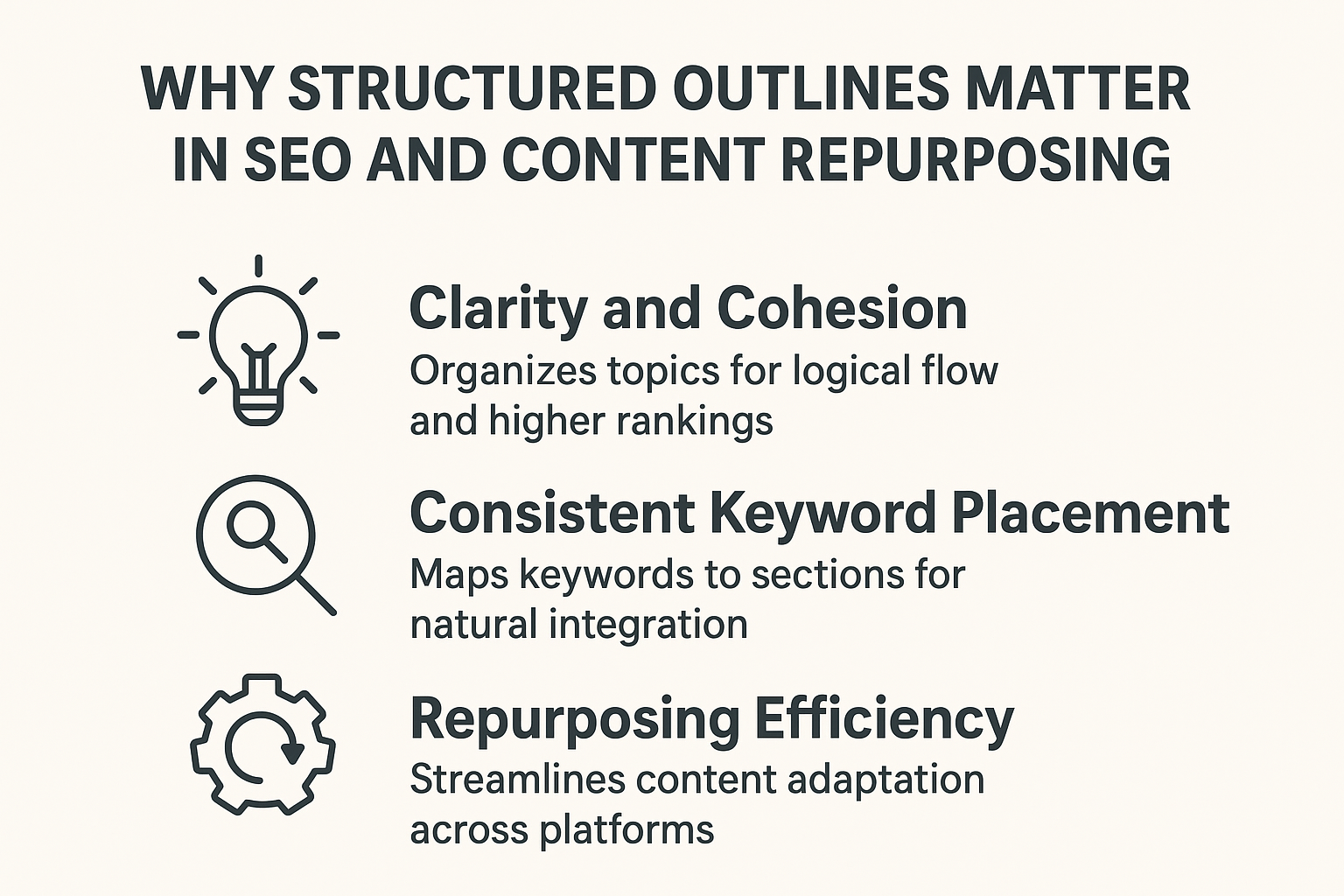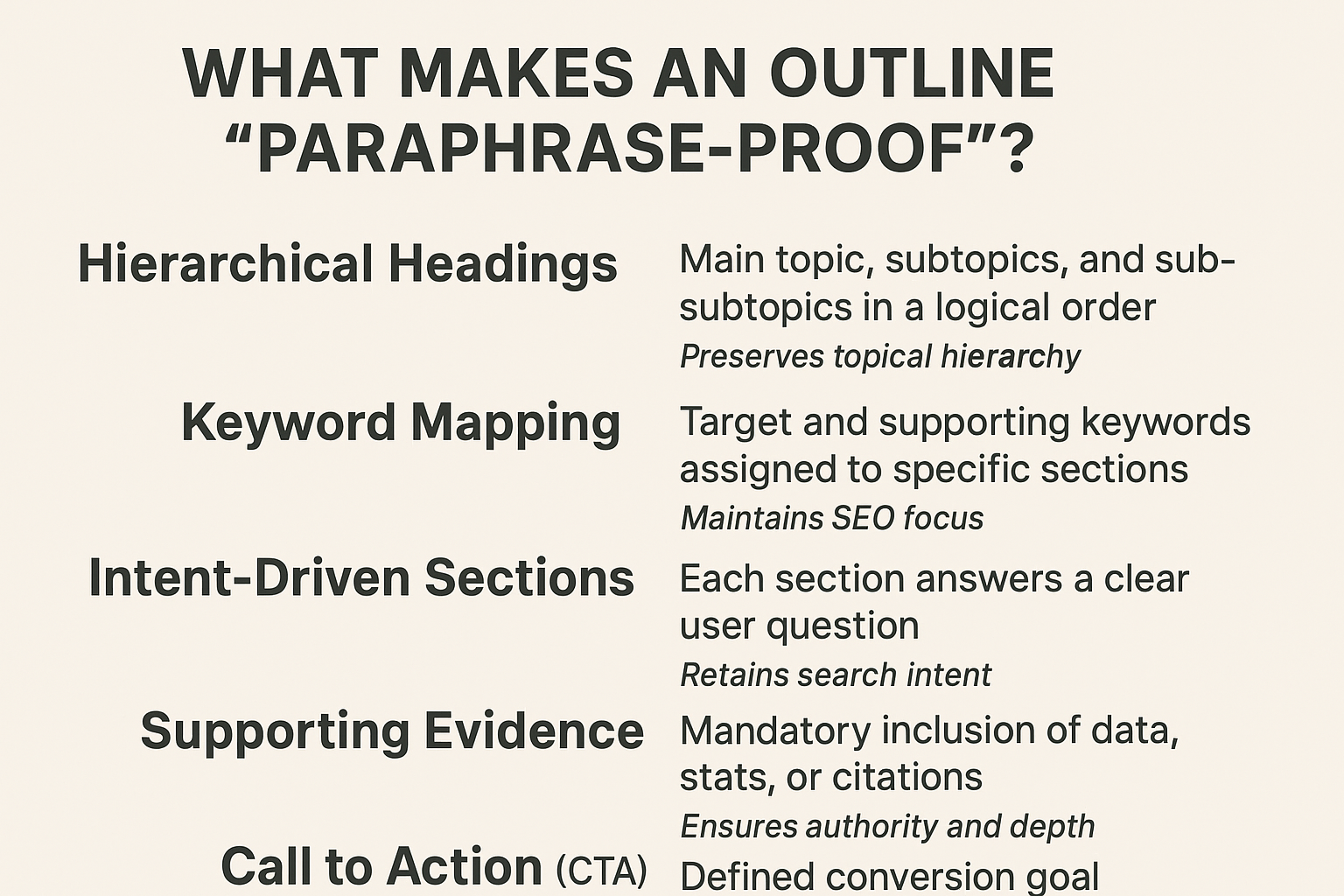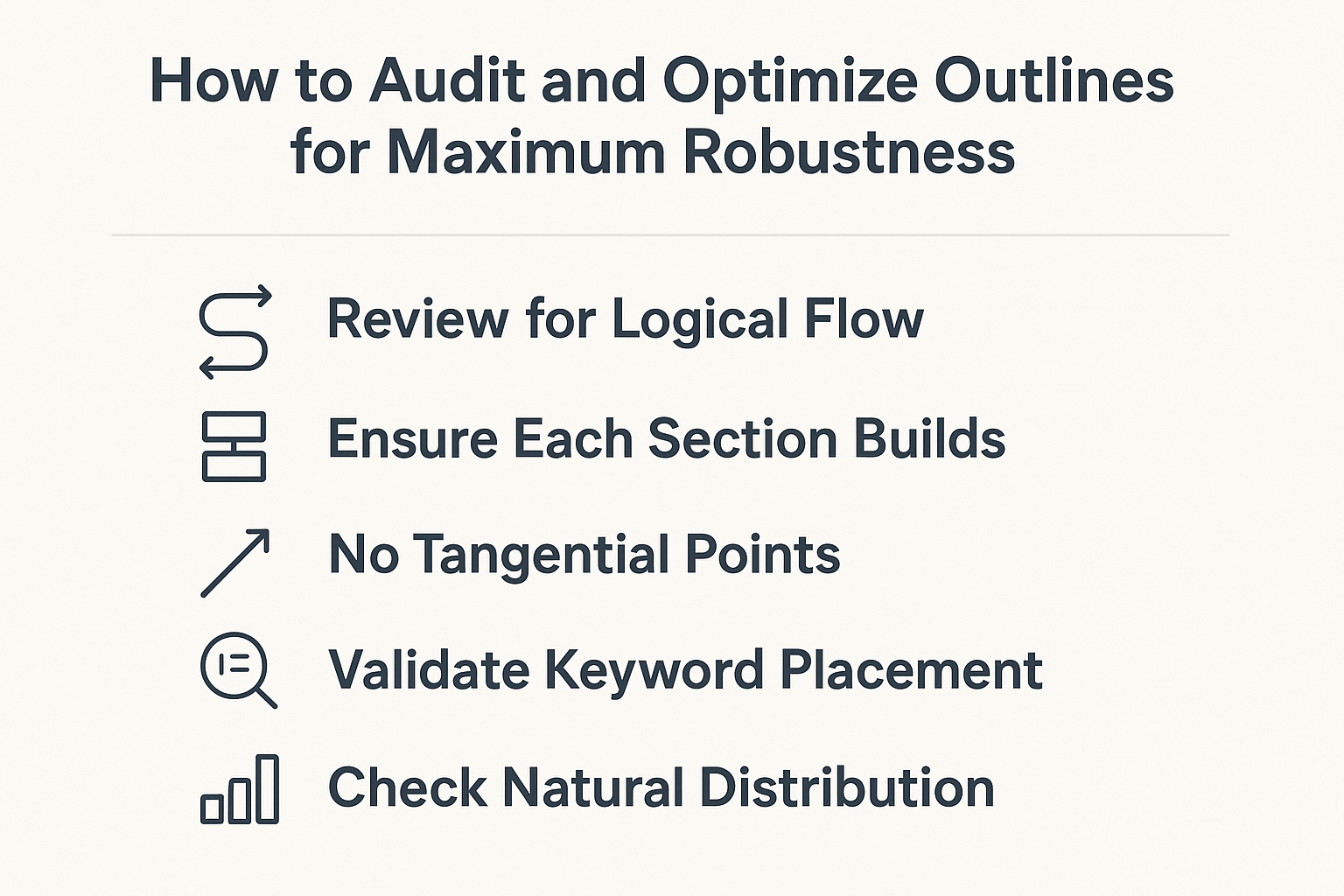Structured Outlines That Survive Paraphrasing

Summary (TL;DR)
Structured outlines are not just an organizational tool for writers; they are a strategic asset that ensures content retains its value, clarity, and search intent—even when paraphrased extensively. For marketing and SEO consultants, building outlines that are inherently robust to rewriting is a key to delivering consistent, repurposable, and algorithm-friendly content that drives measurable client results.
Introduction
Marketers and SEO consultants face a recurring challenge: how to maintain content quality and consistency when outsourcing writing, updating legacy assets, or repurposing material across channels. A well-structured content outline is the foundation, but not all outlines are created equal. The best ones survive paraphrasing—retaining their intent, topical authority, and SEO value regardless of how the actual text is rewritten. This post explains why and how to build such outlines, with practical, data-backed recommendations for professionals.

Why Structured Outlines Matter in SEO and Content Repurposing
How do structured outlines improve SEO and content workflows?
- Clarity and Cohesion: A clear outline organizes topics, subtopics, and supporting arguments, ensuring logical flow and readability[[1]](https://seomator.com/blog/content-outline). Search engines reward this structure with higher rankings, as it matches user intent and reduces bounce rates[[1]](https://seomator.com/blog/content-outline)[[2]](https://graylinemedia.com/how-well-structured-content-can-transform-your-seo-results/).
- Consistent Keyword Placement: Outlines map target and supporting keywords to specific sections, preventing overuse and ensuring natural integration[[1]](https://seomator.com/blog/content-outline). This maintains SEO strength even if wording changes.
- Repurposing Efficiency: Structured content is modular; sections can be reused, updated, or adapted for different platforms without losing coherence or SEO value[[4]](https://www.dashclicks.com/blog/structured-content). This is critical for scaling content operations and maximizing ROI[[4]](https://www.dashclicks.com/blog/structured-content).
- Easier Collaboration: Outlines standardize content creation across teams and freelancers, reducing revisions and maintaining brand voice[[7]](https://www.contentcamel.io/how-to-create-a-content-outline/).

What Makes an Outline “Paraphrase-Proof”?
What structural elements ensure an outline’s survival through rewriting?
| Element | Description | Why It Survives Paraphrasing |
|--------------------------|-----------------------------------------------------------------------------|-------------------------------------|
| Hierarchical Headings | Main topic, subtopics, and sub-subtopics in a logical order | Preserves topical hierarchy |
| Keyword Mapping | Target and supporting keywords assigned to specific sections | Maintains SEO focus |
| Intent-Driven Sections | Each section answers a clear user question or covers a defined subtopic | Retains search intent |
| Supporting Evidence | Mandatory inclusion of data, stats, or citations in each section | Ensures authority and depth |
| Call to Action (CTA) | Defined conversion goal for each piece | Keeps content goal-oriented |
Example: A “paraphrase-proof” blog post outline
- Introduction (Keyword: “structured content outline”)
- Why Structured Outlines Matter (Keyword: “SEO content outline”)
- Benefits for SEO
- Benefits for repurposing
- Building a Robust Outline (Keyword: “content outline structure”)
- Hierarchical headings
- Keyword mapping
- Intent-driven sections
- Tools and Best Practices (Keyword: “SEO tools for outlines”)
- Recommended tools
- Collaboration tips
- Case Study: Impact on Rankings (Data: Before/after outline implementation)
- Conclusion & CTA (Keyword: “SEO consultant”)
This structure ensures that, regardless of how each section is rewritten, the core SEO and user intent remain intact.

How to Audit and Optimize Outlines for Maximum Robustness
How can consultants audit and improve their clients’ outlines?
- Review for Logical Flow: Ensure each section builds on the previous one, with no tangential or redundant points[[1]](https://seomator.com/blog/content-outline).
- Validate Keyword Placement: Check that target keywords are distributed naturally and support